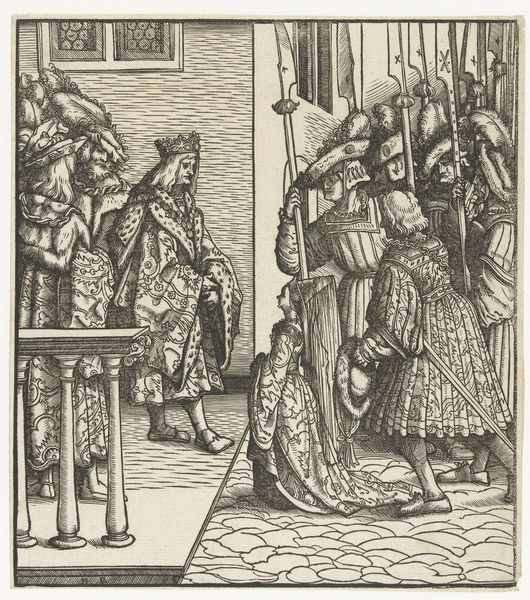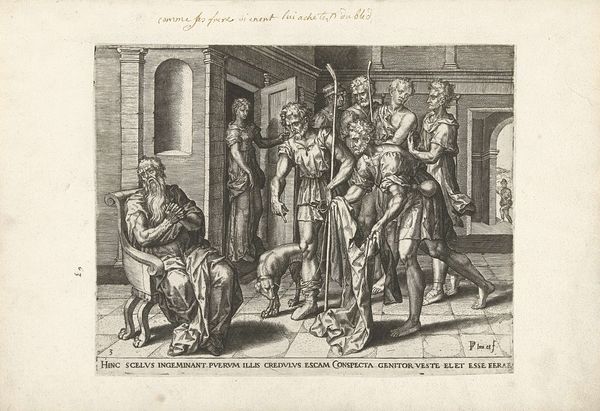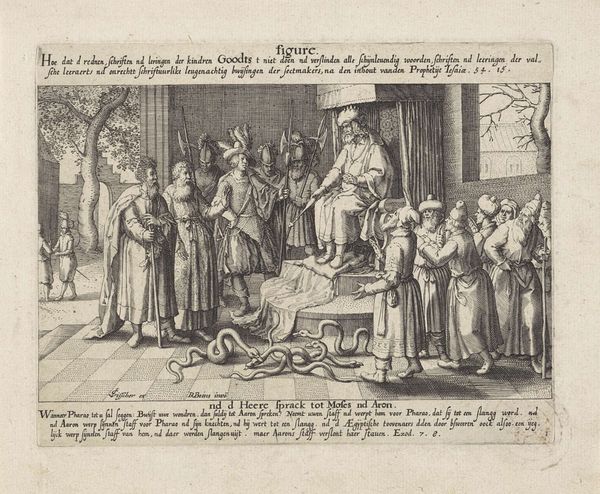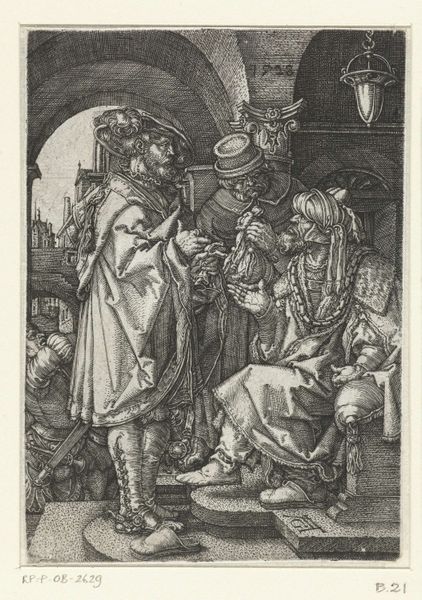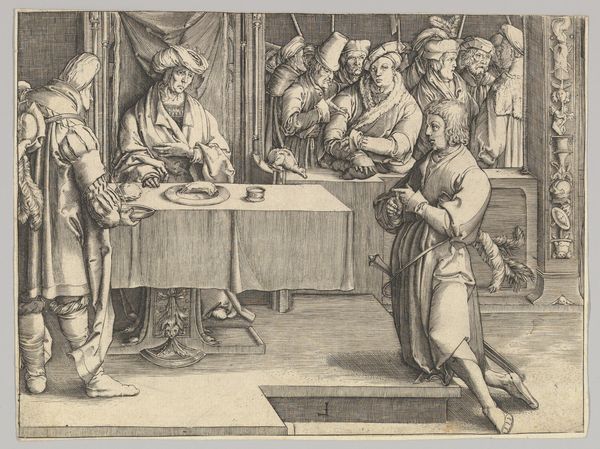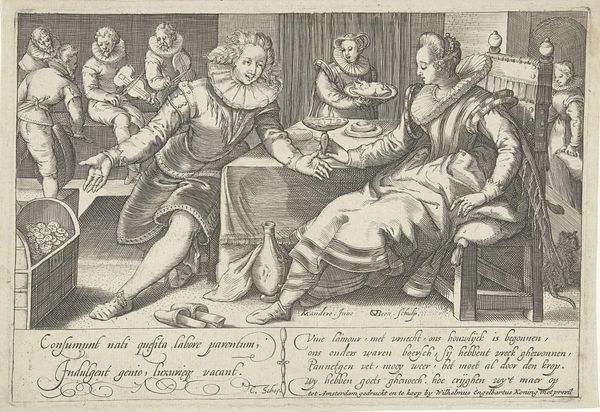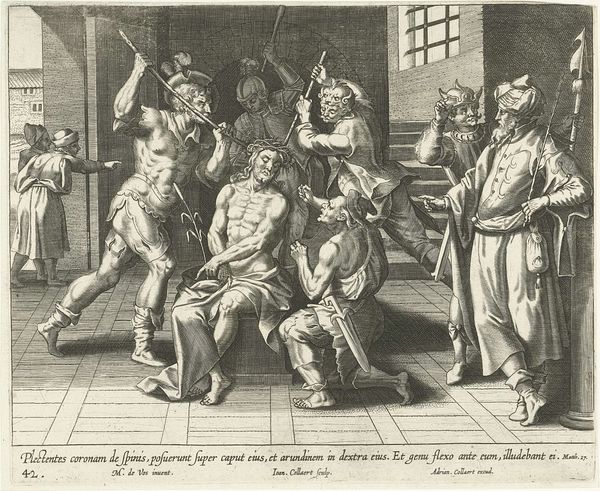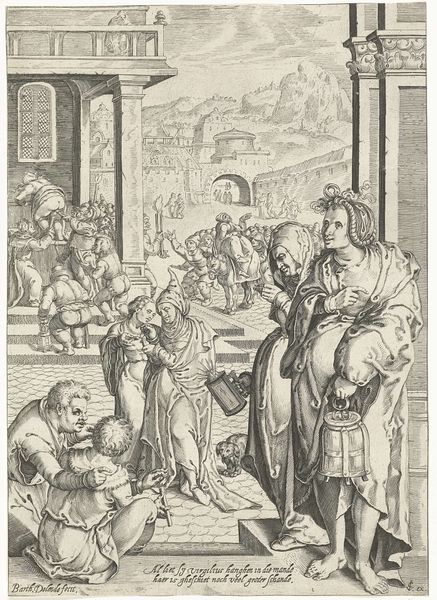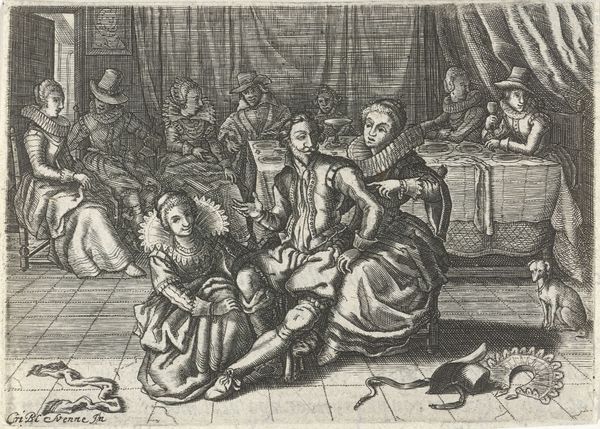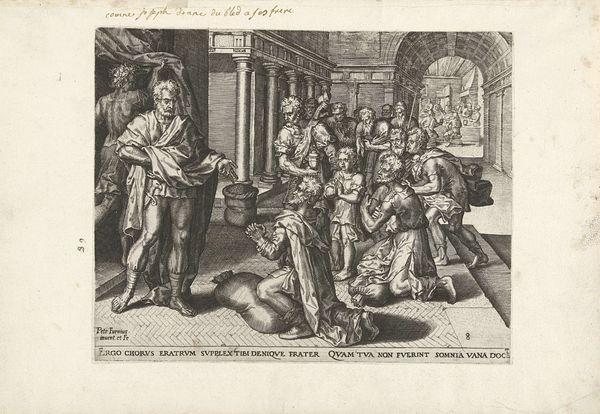
print, engraving
#
portrait
#
baroque
# print
#
genre-painting
#
engraving
Dimensions: height 78 mm, width 106 mm
Copyright: Rijks Museum: Open Domain
Editor: This is "Boertig tafereel in rijk interieur," or "Rustic scene in a rich interior," an engraving by Jan Gerritsz Swelinck, created in 1624. It feels strangely formal for what I'd expect from a genre painting, with everyone so dressed up. What kind of story do you think the image is trying to tell? Curator: An excellent question. Look at the arrangement of the figures; Swelinck isn't just showing us a snapshot of daily life, but staging a moment pregnant with meaning. The act of attending to the man’s leg—perhaps an injury or ailment—resonates with deeper connotations of care, and even possibly a display of wealth and status through such solicitous attention. The shared ruffs visually unify the figures. Does this shared adornment symbolize something beyond mere fashion? Editor: Well, everyone looks pretty wealthy. So perhaps they all belong to a particular guild or share a common trade? The man certainly looks important. Curator: Exactly. Now, consider the iconography of the Dutch Golden Age. Domestic scenes, especially those with implied narratives, were often imbued with moralistic messages. What vices or virtues might be at play here? Consider, for instance, how easily such close proximity and attention might suggest…other less charitable narratives. Editor: You mean, maybe it's not so wholesome? Is the artist hinting at something more sensual or… mischievous? I didn't even think of that! Curator: It’s also worthwhile thinking about the context in which this image would be viewed. Was this purely decorative, or did it serve a didactic purpose? The printing medium made images accessible to a wide audience, beyond the wealthy. These objects became integrated into the everyday lives of ordinary citizens. How might this scene speak differently depending on where it was encountered and by whom? Editor: That makes you rethink everything; the composition, the expressions…the table set for what? It's not just what you see, but who's seeing it! Curator: Precisely! Every element, from the lavish interior to the characters' postures, adds to a multi-layered tapestry. We see not just an image, but the traces of social performance and historical reflection. Editor: So, a seemingly simple domestic scene becomes a complex mirror of its time.
Comments
No comments
Be the first to comment and join the conversation on the ultimate creative platform.

